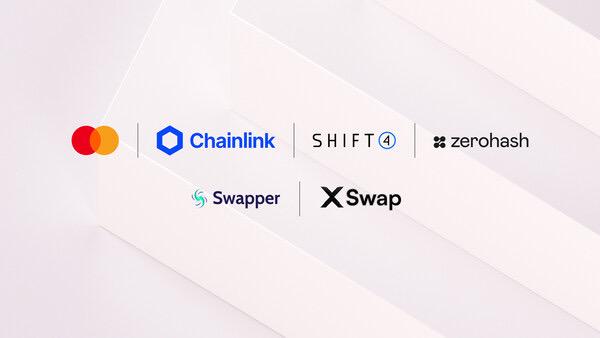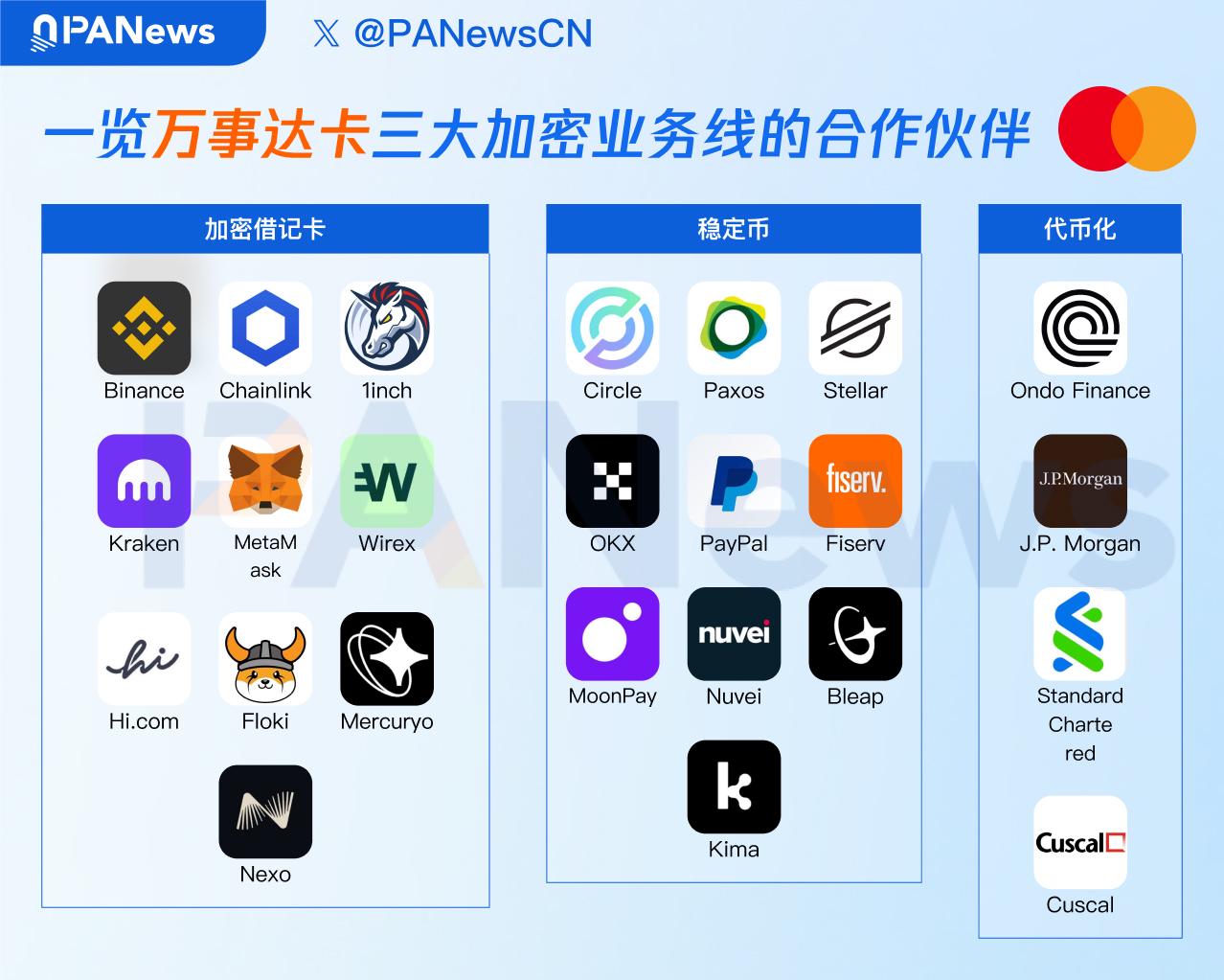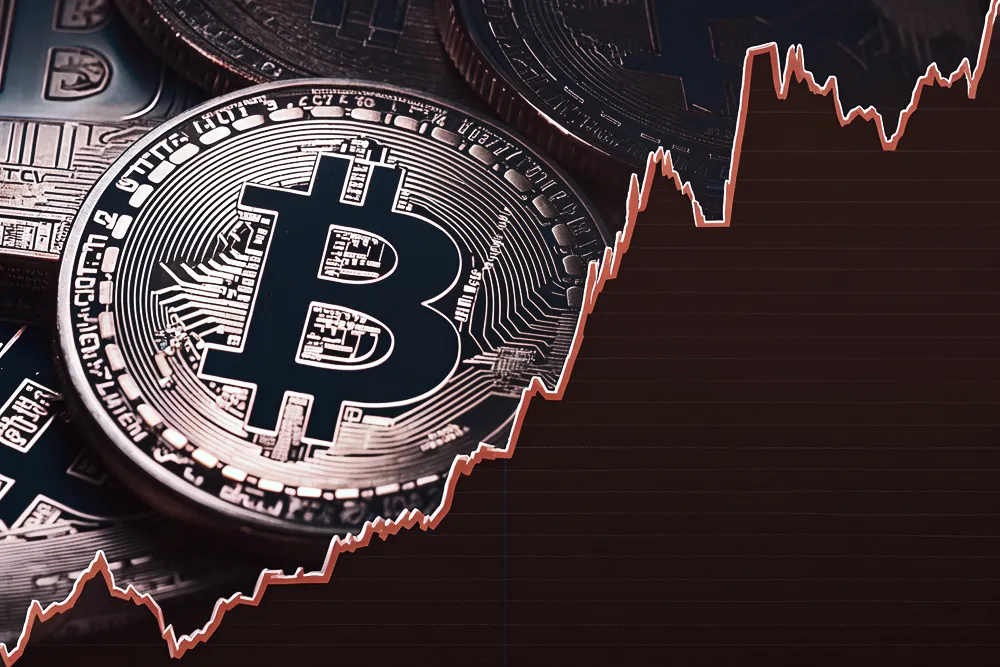Author: Nancy, PANews
Traditional financial institutions are accelerating their entry into the cryptocurrency space. On June 24, payment giant Mastercard announced that it would provide on-chain cryptocurrency purchasing services, further promoting the mainstreaming of crypto payments.
In fact, in recent years, Mastercard has been deepening its crypto strategy and has moved from experimental exploration to practical implementation, becoming a key player in its global financial landscape.
Swipe to Buy Crypto? Mastercard Opens On-Chain Deposit Channel
Yesterday, Chainlink and Mastercard officially announced a strategic partnership that will allow over 3 billion cardholders worldwide to purchase cryptocurrencies directly on the blockchain using their credit cards. This is not only another significant move by Mastercard in the crypto space but also achieves a deep integration of traditional financial networks with core components of DeFi in the fiat deposit pathway, potentially opening a new channel for the widespread adoption of on-chain finance.

According to reports, in this service system, users do not need to register for a centralized exchange (CEX) account or go through complicated on-chain bridging processes. They only need to initiate a transaction request through the DEX Swapper Finance, which has integrated this functionality, to purchase crypto assets using their Mastercard.
Swapper Finance serves as the user front-end entry point, supporting the initiation of credit card payment instructions; traditional payment gateway service provider Shift4 Payments provides seamless card payment processing, verifying and processing users' fiat payments (such as USD, EUR, etc.); ZeroHash, as a cryptocurrency and stablecoin infrastructure provider, is responsible for converting users' fiat currency into cryptocurrencies (such as BTC, ETH, etc.), ensuring compliance, providing liquidity, and on-chain services; Chainlink's decentralized oracle network and interoperability standard (CCIP) ensure the security of on-chain transactions and the reliability of data, while its ecosystem DEX XSwap utilizes protocols like Uniswap to obtain liquidity for on-chain cryptocurrency exchanges.
Ultimately, crypto assets will be sent directly to users' on-chain wallet addresses via smart contracts, and the entire process does not require knowledge of trading pairs, gas fees, or slippage parameters, nor does it require switching to a centralized trading platform.
It is worth noting that in recent years, traditional payment companies like Visa and Mastercard have primarily focused their cryptocurrency collaborations on the consumer end, allowing users to spend crypto through crypto debit cards, with the backend automatically converting held digital assets into fiat for everyday payments, such as the crypto debit card launched by Uphold and Worldcoin.
However, this collaboration between Mastercard and Chainlink is no longer about using on-chain assets for real-world consumption but directly opens the channel for fiat deposits to on-chain assets, allowing non-crypto native users to swipe their cards just like shopping on Amazon to obtain on-chain assets, without needing to understand any DeFi concepts, and in a compliant and transparent manner. This not only breaks down the long-standing barriers to fiat deposits for DeFi users but also provides a compliant, secure, and controllable on-chain pathway for the traditional financial system.
In this regard, Raj Dhamodharan, Executive Vice President of Blockchain and Digital Assets at Mastercard, stated, "People want to easily connect to the digital asset ecosystem, and vice versa. This is why we continuously leverage our global payment network and mature experience to bridge the gap between on-chain commerce and off-chain transactions. By partnering with Chainlink, we are unlocking a secure and innovative way to fundamentally transform on-chain commerce and drive broader adoption of crypto assets."
"This is a typical case of the integration of traditional finance and decentralized finance. I am very excited about Chainlink's ability to drive this critical connection from traditional payment networks to on-chain DEX trading environments. This is a complex and multi-layered collaboration, and I am delighted to facilitate it with the power of the Chainlink community," noted Sergey Nazarov, co-founder of Chainlink.
Aiming to Stimulate New Business Models with Crypto, Focusing on Three Major Areas This Year
"The key issue hindering the mainstream adoption of cryptocurrencies is that it is difficult for users to identify and transfer funds to each other in familiar ways. Mastercard's goal is to become the connector between traditional finance and blockchain networks, stimulating new business models while ensuring compliance," Raj Dhamodharan, head of Mastercard's crypto and blockchain business, pointed out recently. Currently, Mastercard has shifted from the experimental phase to providing actual crypto solutions.
In fact, unlike many traditional financial institutions that still view crypto as a fringe area or regulatory risk, Mastercard is actively advancing its layout in the crypto field, gradually integrating crypto assets, stablecoins, and tokenized assets into everyday payment experiences.
According to a report submitted by Mastercard to the U.S. SEC in February this year, the company has made significant progress in achieving its goal of an "innovative payment ecosystem," including tokenization of transactions, creating solutions to unlock blockchain-based business models, and simplifying access to digital assets. At the same time, in this document, Mastercard explicitly stated that digital currencies have the potential to disrupt traditional financial markets and may directly challenge its existing products. Due to the accessibility, immutability, and efficiency of digital assets, stablecoins and cryptocurrencies may become more popular as they are regulated, becoming competitors in the payment industry.

In fact, before the reality of swiping cards to buy crypto, Mastercard has been promoting the commercialization of crypto payments, including collaborations with crypto companies such as Binance, Kraken, MetaMask, 1inch, and Floki to launch co-branded crypto debit cards, allowing cardholders to spend directly with cryptocurrencies, with the backend automatically completing the fiat conversion.
Moreover, in the process of laying out crypto payments, stablecoins are becoming the strategic hub for Mastercard's on-chain settlement.
Recently, Mastercard joined the stablecoin alliance Global Dollar Network, initiated by institutions like Paxos, to jointly mint and share interest earnings from the stablecoin USDG, which is pegged to U.S. Treasury bonds. At the same time, Mastercard will support PayPal's PYUSD and Fiserv's FIUSD stablecoins and integrate them into the Mastercard Move payment network; in May, Mastercard announced a partnership with crypto payment company MoonPay to launch a new stablecoin payment card, allowing users to make stablecoin payments at over 150 million merchants worldwide, with transactions automatically converted to fiat; in April, Mastercard announced collaborations with Nuvei, Circle, and Paxos to launch a comprehensive stablecoin payment solution, enabling merchants to directly use stablecoins, including USDC, for transaction settlements. In the same month, Mastercard partnered with OKX to launch the OKX Card, supporting stablecoin payments within its vast merchant network, and reached a strategic cooperation with Bleap, founded by former Revolut employees, aiming to integrate stablecoin payments more deeply into traditional financial infrastructure…
These intensive actions indicate that Mastercard is incorporating stablecoins into users' daily consumption, settlement, and transfer behaviors. To enhance the security and user-friendliness of crypto asset transactions, Mastercard previously launched Crypto Credential, which replaces complex wallet addresses with easy-to-use aliases, reducing the likelihood of errors during cryptocurrency transfers.
In addition to stablecoins, Mastercard is also vigorously promoting the construction of asset tokenization. In April this year, Mastercard revealed that it is developing a Multi-Token Network, aiming to replicate its traditional payment network to provide digital asset trading infrastructure for consumers, merchants, and financial institutions. This system will integrate the flow of on-chain and off-chain assets, ensuring compliance and optimizing user experience. Mastercard has partnered with institutions like JPMorgan and Standard Chartered to explore scenarios such as cross-border payments and carbon credit tokenization, and has applied for over 250 blockchain-related patents since 2015; in February, Ondo Finance joined the Mastercard network to improve cross-border payments, with its short-term U.S. government bond fund (OUSG) investment product opening up to enterprises on Mastercard's Multi-Token Network (MTN), allowing them to earn returns through tokenized assets; last November, Mastercard had already partnered with JPMorgan's digital asset business Kinexys to strengthen B2B cross-border payments, providing greater transparency and faster settlement speeds, and reducing time zone friction; in August of the same year, to combat the growing issue of online fraud, Mastercard planned to eliminate credit card numbers and expand its tokenization program using biometric data such as fingerprints or facial scans as security measures; in May 2024, Mastercard completed a proof-of-concept test for tokenized deposits through the Hong Kong Monetary Authority's regulatory sandbox. According to Mastercard, it has achieved 30% transaction tokenization in 2024.
"We believe that the future financial system will include both bank deposits and stablecoins. Deposits are the foundation of funds, while stablecoins provide efficient on-chain settlement capabilities. If there can be more regulatory clarity in the future, allowing deposits to be represented on public chains in some form, this will be key to the large-scale expansion of tokenization." In an interview months ago, Dhamodharan revealed that Mastercard has set its strategic focus for 2025 on three major areas: on-chain/off-chain deposits and withdrawals, promotion of Crypto Credential, and stablecoin applications. Currently, Mastercard supports financial institutions in using stablecoins for transaction settlements and plans to announce more partnerships and application scenarios this year to continue advancing the integration of crypto.
In the accelerating process of integration between traditional financial institutions and the crypto space, Mastercard is breaking through in three major areas, building its own crypto business landscape.
免责声明:本文章仅代表作者个人观点,不代表本平台的立场和观点。本文章仅供信息分享,不构成对任何人的任何投资建议。用户与作者之间的任何争议,与本平台无关。如网页中刊载的文章或图片涉及侵权,请提供相关的权利证明和身份证明发送邮件到support@aicoin.com,本平台相关工作人员将会进行核查。




